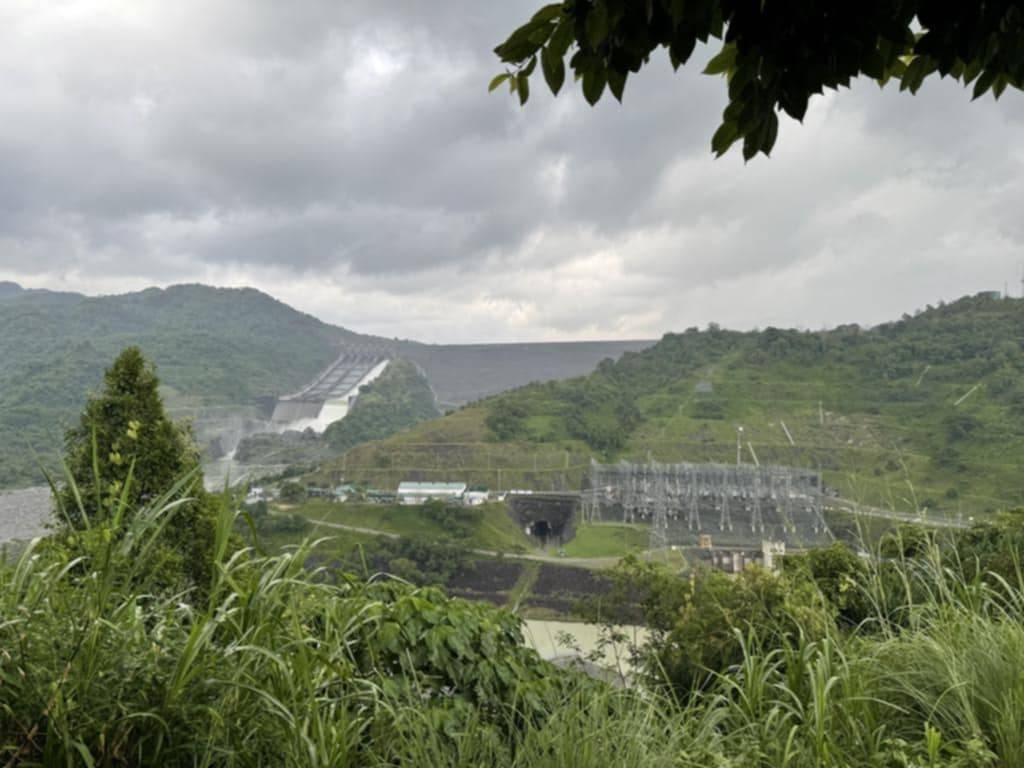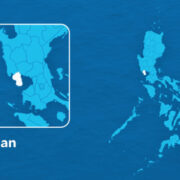San Roque starts water release as dam level up

CALASIAO, PANGASINAN—The National Power Corp. (Napocor) opened one of six gates of the San Roque Dam in Pangasinan by 0.5 meter (1.64 feet) on Wednesday as a precautionary measure to manage the continued rise of water level in the reservoir due to heavy rains since last week.
As of 8 a.m. Wednesday, the dam’s water elevation reached 277.38 meters above sea level—just under 3 meters shy of its 280-meter spilling level.
San Roque Dam, which continues to receive excess water from the Ambuklao and Binga Dams in Benguet province, released around 65 cubic meters of water per second through the Agno River. A cubic meter of water, for reference, may fill the size of a regular “balikbayan “box.
The Agno River traverses multiple towns before emptying into the Lingayen Gulf via the Limahong Channel.
River rehab
Napocor has advised local governments along the Agno River to prepare for a possible rise in water levels and to conduct preemptive evacuations if necessary.
Towns along the river’s path include San Manuel, San Nicolas, Santa Maria, Asingan, Villasis, Rosales, Santo Tomas, Alcala, Bautista, Bayambang, Mangatarem, Urbiztondo, Aguilar, Bugallon, and Lingayen, and San Carlos City.
Amid the incessant rains due to the enhanced southwest monsoon and recent storms, the provincial government announced that it was preparing for a large-scale rehabilitation of Pangasinan’s major river systems and their tributaries to mitigate future flooding.
Pangasinan is still recovering from the widespread devastation caused by Typhoon “Crising” (international name: Wipha) and Tropical Storm “Emong” (Co-may), along with weeklong monsoon rains that triggered massive floods in central towns and knocked out power in western areas, crippling businesses and forcing the closure of schools and government offices.
“There is an urgent need to rehabilitate our rivers, which are now heavily silted—one of the primary causes of flooding,” Gov. Ramon Guico III told the Inquirer.
Pangasinan has three major river systems: Toboy-Sinocalan-Pantal, Agno, and Bued-Cayanga—all of which drain into the Lingayen Gulf. The Toboy-Sinocalan-Pantal River, which flows through central Pangasinan, was severely swollen during the recent heavy rains, with water topping its banks flooding several towns.
In a separate interview, Vice Gov. Mark Lambino said that in March 2024, the provincial board signed a memorandum of agreement for the rehabilitation of the river. While he did not name the implementing party, Lambino stressed that river rehabilitation was a complex undertaking.
“This isn’t as simple as quarrying where you just remove aggregates,” he said.
Torrential rain
“River rehabilitation requires environmental engineers and planners to identify the natural water flow and ensure ecological balance,” he added.
The project, Lambino said, will be “long-term.”
“This won’t be finished in six to 12 months—it may take years, even decades. The Agno River alone stretches 112 kilometers,” he said.
In Baguio City, heavy monsoon rains since July 11 dumped 1,608.8 millimeters of rainwater, more than double the seasonal average of 772.7 mm, the weather bureau reported during a climate change forum on Tuesday. This caused flooding and minor landslides across the mountain city.
On Wednesday, a parking lot in Baguio’s Suello Village collapsed due to soil erosion, dragging down a 10-meter trailer and damaging nearby houses, police said. City workers are building a dike to prevent further erosion.
Rescuers continued searching for a 35-year-old man swept away by heavy current in Barangay Kias on Tuesday. The search had expanded to the community of Ampucao in Itogon, Benguet.
Power outages have disrupted Baguio Water District’s pumping operations, prompting advisories about possible low water pressure in households.
In nearby La Trinidad town in Benguet, 1,371.8 mm of rainfall—almost double the average—flooded the town’s strawberry fields. The agriculture department has begun assessing crop damage and plans to replenish affected produce in coordination with the local government.
Amid the heavy rains, Occidental Mindoro was placed under a state of calamity, the latest among several local governments that made similar declarations, Gov. Eduardo Gadiano announced on Wednesday.
The declaration, based on the recommendation of the Provincial Disaster Risk Reduction and Management Council and through Resolution No. 210 by the provincial board, was prompted by heavy damage from the southwest monsoon intensified by Storms “Crising,” “Dante,” and “Emong.” Total losses were estimated at P258.8 million. —WITH REPORTS FROM VINCENT CABREZA AND MADONNA T. VIROLA





















